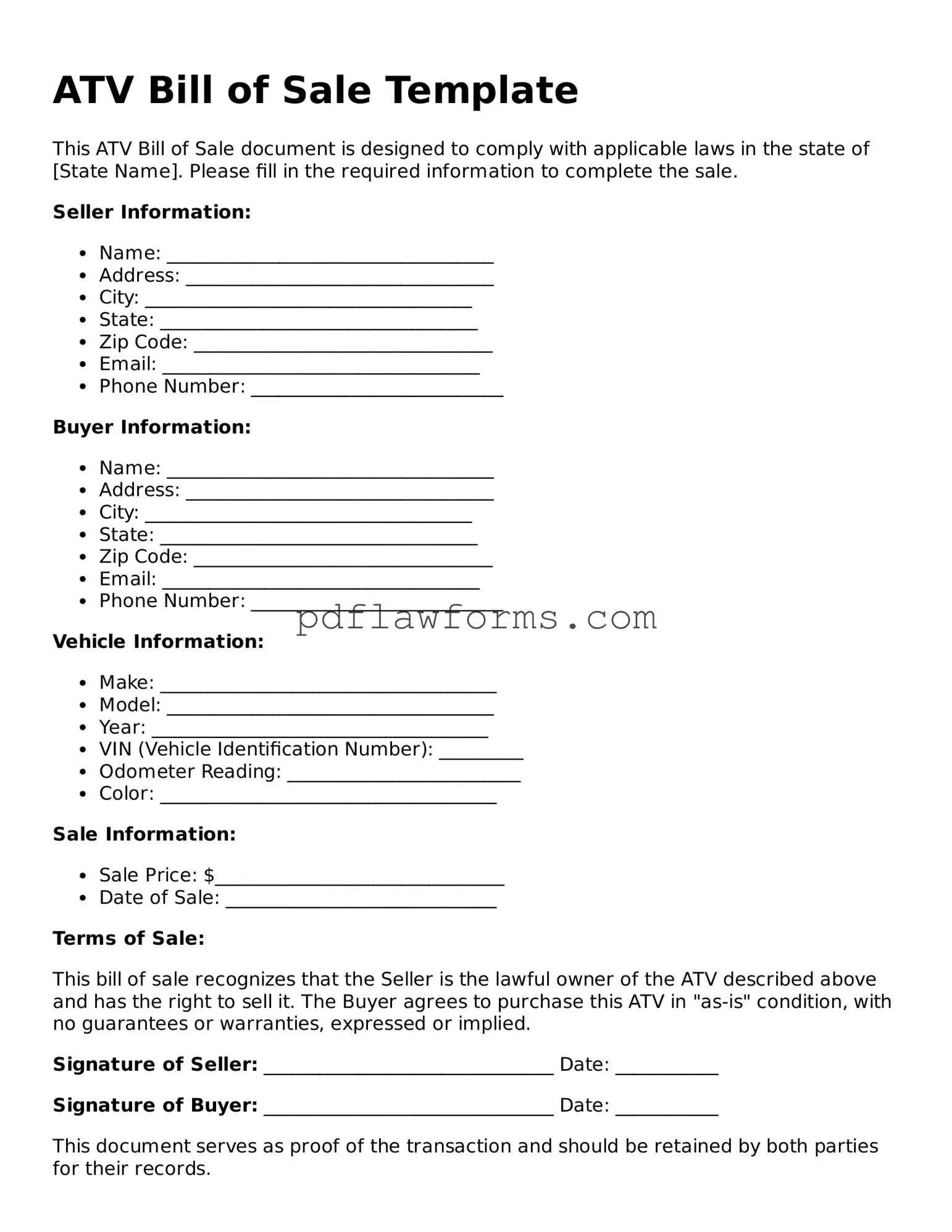Filling out an ATV Bill of Sale form can seem straightforward, but many people make common mistakes that can lead to complications later. One frequent error is neglecting to include all required information. This includes the buyer's and seller's names, addresses, and contact information. Omitting even one detail can create confusion and potential disputes.
Another mistake is failing to accurately describe the ATV. The form should include the make, model, year, and Vehicle Identification Number (VIN). If these details are incorrect or missing, it can lead to problems with registration or future sales.
People often forget to include the sale price. This is crucial for both parties, as it establishes the value of the transaction. Leaving this blank can result in issues with taxes or financing in the future.
Signing the form is essential, yet some individuals overlook this step. Both the buyer and seller must sign the document to make it legally binding. Without signatures, the form may not hold up in court if disputes arise.
Another common error is not having a witness or notarization when required. While not all states mandate this, having a witness can add an extra layer of protection. Notarization can also help verify the identities of the parties involved.
Some people fail to keep a copy of the completed Bill of Sale. This document serves as proof of the transaction and can be important for future reference. Keeping a copy can help resolve any issues that may come up later.
Many individuals do not check state-specific requirements. Laws regarding ATV sales can vary significantly from one state to another. Understanding these regulations is crucial to ensure compliance and avoid legal issues.
Another mistake is not providing accurate payment details. If the payment method is unclear or not specified, it can lead to misunderstandings between the buyer and seller.
Lastly, some people rush through the process without reviewing the completed form. Taking a moment to double-check all information can prevent mistakes and save time and trouble in the long run.
